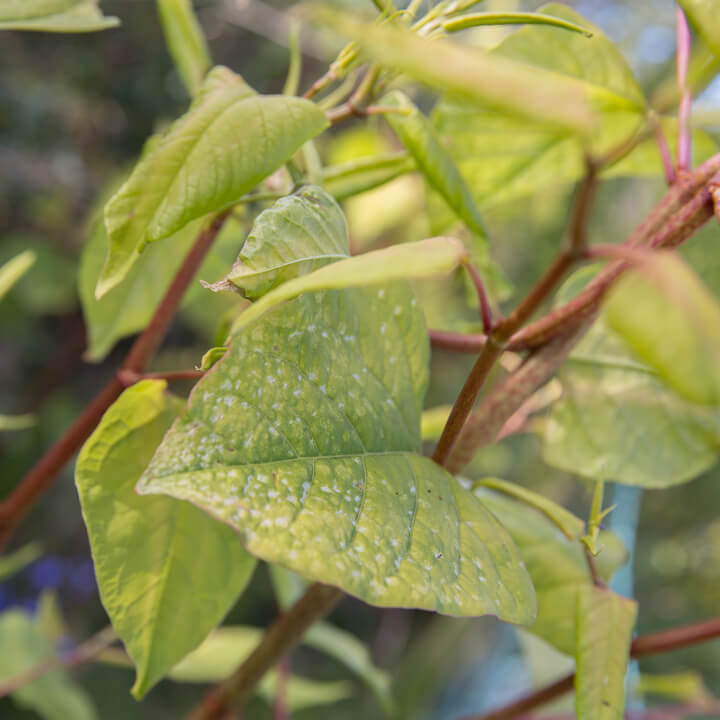Failure to spot Japanese Knotweed can be negligent
2nd August 2019
Surveyors risk being liable in negligence for failing to notice or identify Japanese Knotweed. Steve Nixon reviews a recent case concerning this invasive species which continues to cause issues for landowners and property practitioners.
Why is RYB v Conway Chartered Surveyors important?
As we have reported previously, the presence of Japanese Knotweed, a non-native and highly invasive species, can significantly affect the value, marketability and insurability of land and buildings; it can be incredibly costly and particularly difficult to eradicate; and it will invariably give rise to an actionable nuisance.
In addition, the recent first instance decision in RYB v Conway Chartered Surveyors [1] highlights that surveyors risk being liable in negligence for failing to notice or identify Japanese Knotweed.
What happened in this case?
The claimant had commissioned the defendant surveyors to conduct a building survey at a ground floor flat with a garden in North London. The claimant was proposing to, and subsequently did, buy the property for a price of £1.275 million in October 2014. The surveyor did not take any photographs of the garden, nor did he produce any measurements or plans of the property although he concluded it would be “a worthwhile investment.” Japanese Knotweed was then found in three locations in the garden in July 2015. The claimant commissioned professionals to remove the plant, which took two attempts over two years and caused damage and disturbance to the garden. The claimant brought a claim in negligence against the surveyors for the cost of the remediation works and for the reduction in value of the flat.
The judge found the defendants liable and awarded £50,000 in damages. (The damages included the cost of £10,260 inclusive of VAT spent by the claimant on the remediation works and a sum for diminution in value of the property.)
What are the key points to note?
There are several important points arising from this case:
- Ordinarily in surveyors’ negligence claims, the measure of damages is the difference in value between the price paid and the market value of the property. However, this case suggests that the likely diminution in value arising from Japanese Knotweed is not simply a blanket percentage deduction of the property value. Rather, the judge applied a framework approach which considers certain characteristics of a property to establish the impact the knotweed would have on the market value. These included:
- desirability of the property;
- extent of the infestation and size relative to the size of the garden;
- likely use for the affected land;
- proximity to a built structure;
- and the risk of the plant spreading to neighbouring land.
- The surveyor in this case had not taken photographs and could not therefore support his argument that the knotweed was not clearly visible and obvious to him.
- The case therefore relied heavily on expert evidence (knotweed experts and surveyors) as to what a reasonably competent surveyor would have spotted on the day of inspection.
- There could be an acceptable margin of error depending on:
- the scope of the survey;
- the location and extent of the knotweed; and
- the time of year.
- However, despite an information paper being published by the Royal Institute of Chartered Surveyors (Japanese knotweed and residential property, 1st edition) in July 2012, the defendant could not establish that he had undertaken any relevant training, nor could he provide any evidence in his records that he was competent at identifying knotweed in September 2014.
- Furthermore, given the publicity that knotweed has attracted since the Network Rail Court of Appeal case in 2018 [2], the courts are perhaps unlikely to show much leniency when it comes to the identification of the plant during surveys.
Practical advice
The decision gives rise to some practical advice for both landowners and surveyors.
Landowners
- It is sensible to ensure that, where treatment is undertaken to eradicate knotweed, a record is retained of the presence of the knotweed before it is removed. This ensures that there is evidence in case it is required later down the line. This is especially important given the financial implications.
- Ideally, specialist companies should be used to eradicate knotweed and it may be worth investing in an insurance-backed guarantee for the removal treatment which ensures ongoing treatment cover if the knotweed regrows or the original work is insufficient. The benefit of a knotweed guarantee can also usually be assigned to a purchaser on the sale of a property.
- Potential claimants should check whether any relevant insurance policy (such as home insurance) is sufficient to cover the costs of litigation. Claims can be costly, particularly where expert evidence is likely to be needed.
Surveyors
- Surveyors should ensure that they:
- properly survey and assess for the possibility of Japanese Knotweed when inspecting a property; and
- take photographic evidence and detailed notes to support their inspections/conclusions.
- Surveyors should also undertake regular professional development and training to ensure they are up-to-date on emerging areas relevant to their practice, such as their responsibilities and potential liabilities in respect of Japanese Knotweed. It is also crucial to ensure that a complete and accurate record is maintained to evidence this training and development.
____________
[1] [2019] Unreported, HHJ Luba QC
[2] Network Rail Infrastructure Limited v Williams and Waistell [2018] EWCA Civ 1514



